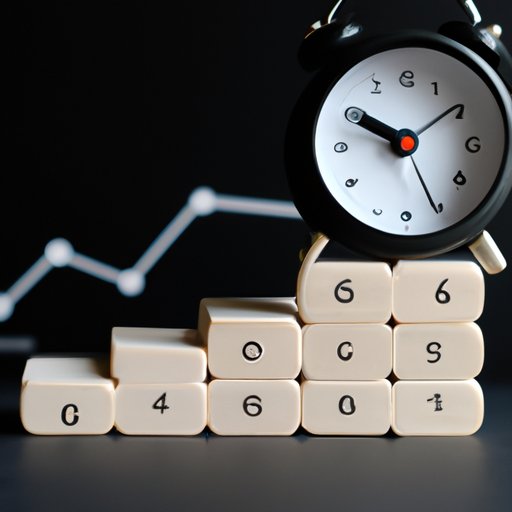
I. Introduction
Have you ever wondered how quickly a population can grow, or how long it takes for a substance to double in size? These questions can be answered by understanding doubling time, which is a critical concept in many fields. This article will provide a step-by-step guide on how to calculate doubling time, why it matters, and how it can be applied to various scenarios.
II. A Step-by-Step Guide on How to Calculate Doubling Time
Doubling time refers to the time it takes for a substance or population to double in size. It can be calculated using a specific formula:
Doubling Time = ln(2) / r
The variable “r” here represents the rate of growth or decline of the substance or population, and “ln” represents the natural log. To calculate doubling time, follow these simple steps:
- Measure the initial size of the substance or population
- Measure the final size of the substance or population
- Calculate the growth or decline rate (r) by using the formula:
- Insert the growth or decline rate (r) into the doubling time formula
- Calculate the doubling time
r = (ln(final size) – ln(initial size)) / time
For example, let’s assume we have a population of bacteria that starts with 100 individuals and grows to 400 individuals in 10 hours. Using the formula above, we can calculate the doubling time as follows:
- Initial size = 100, final size = 400, time = 10 hours
- r = (ln(400) – ln(100)) / 10 = 0.1386
- Doubling Time = ln(2) / 0.1386 ≈ 5 hours
It’s essential to avoid common mistakes such as using the wrong formula or not measuring the initial and final sizes correctly.
III. Why Understanding Doubling Time is Important
Knowing the doubling time of a population or substance can have a significant impact on various fields, from healthcare to economics. It can provide valuable information about the rate of growth or decline, which can help predict future trends, plan interventions, or prevent catastrophes. For example, in healthcare, understanding the doubling time of a disease can help determine the speed of its spread and inform public health policies and interventions.
Moreover, many economic growth models rely on understanding a population’s or a company’s doubling time to predict future growth rates and investments.
IV. How to Alter Doubling Time
Several factors can impact the doubling time of a substance or population, such as the growth rate, the death rate, migration, and environmental factors. While some factors are beyond our control, others can be influenced by interventions, such as vaccinations, education, or public policies.
For example, vaccinations can slow down the growth rate of a disease and increase its doubling time, giving public health officials more time to prepare for potential outbreaks. Similarly, improving access to education and health care can reduce mortality rates and eventually increase the population’s doubling time.
V. Common Applications of Doubling Time
Doubling time has many real-world applications, from predicting the spread of diseases to forecasting economic growth. For example, during the current pandemic, calculating the doubling time of COVID-19 cases can help inform public health officials about the speed of the virus’s spread and the necessary measures to control it.
Moreover, businesses and investors can use doubling time to predict future growth rates and make informed decisions about investment and expansion. Additionally, urban planners use doubling time to predict and manage population growth in cities.
VI. Visualizing the Concept of Doubling Time
Infographics, data visualizations, or other tools can help readers better understand the concept of doubling time. For example, a chart that illustrates the growth rate of a population over time can help readers visualize how quickly the population can double in size. Similarly, animations that show the spread of diseases or substances can help readers understand how doubling time can impact the speed of growth.
VII. Conclusion
Calculating doubling time is crucial in understanding the growth or decline rate of populations or substances. It can inform predictions and interventions in fields such as healthcare, economics, and urban planning. By understanding how to calculate, alter, and use doubling time, readers can make informed decisions in various scenarios.




